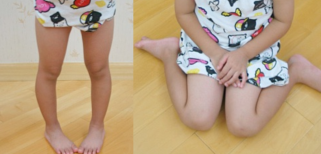




Health Information



Common Foot Problem in Children: In-Toeing

Common Foot Problem in Children: In-Toeing (by Sportsperformance Physiotherapy)
Children’s feet can change significantly from birth, and as they grow older, many so-called 'foot problems' will naturally correct themselves. Most 'foot problems' in children are just normal developmental variations. However, if a child’s foot is painful, stiff, or slow to improve, a physiotherapist can provide professional advice and a treatment plan.
One common foot problem in kids is “In-Toeing (Pigeon Toes).”
What is In-Toeing (Pigeon Toes)?
In-toeing refers to individuals whose toes point inward when walking or standing. It is common in children under the age of two who are developing posture and balance and may involve one or both feet.
What does in-toeing affect?
• When walking, the feet turn inwards, causing them to rub against each other easily.
• Unsteady walking, especially during running, as the feet rub against each other. This affects balance and muscle coordination during walking and exercise.
• An inside-out stance shifts the centre of gravity to the fourth and fifth toes when walking, which can result in deformation of the toes due to prolonged stress.
What are the treatment options for in-toeing?
• Physiotherapy: Professional guidance to improve foot alignment and strength.
• Special Footwear and/or Bracing: Designed to support proper foot positioning.
• Improving Sitting and Sleeping Postures: Avoiding positions that exacerbate in-toeing.
• Podiatry: Customized In-Toe Gait Biomechanical Insoles: These insoles are designed to restrict in-toeing from rotational deformities of the foot (metatarsus adductus), altering the break of the ball of the foot during propulsion to encourage realignment of the hip.
In-toeing tends to run in families and can be related to existing medical conditions such as cerebral palsy. It usually self-corrects without the need for medical intervention.
However, if in-toeing is severe, involves leg and hip rotation, and isn’t improving by the age of two, it may be appropriate to seek medical advice from a certified orthotist.
Make an appointment to talk to a podiatrist to obtain a proper diagnosis and appropriate treatment if you have further questions about your children's foot issue.
Related Services:
- General Podiatry
- Paediatric Foot Conditions
- 3D Scanning for Orthotics
- Custom Orthotic Prescription
- Gait Analysis
Futher reading:



